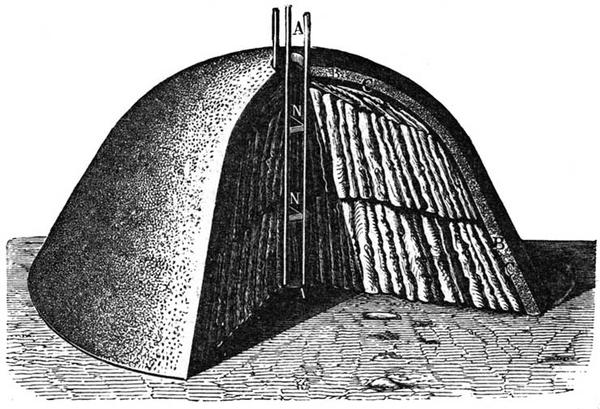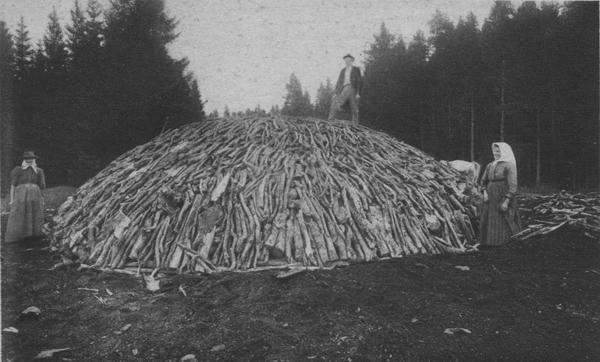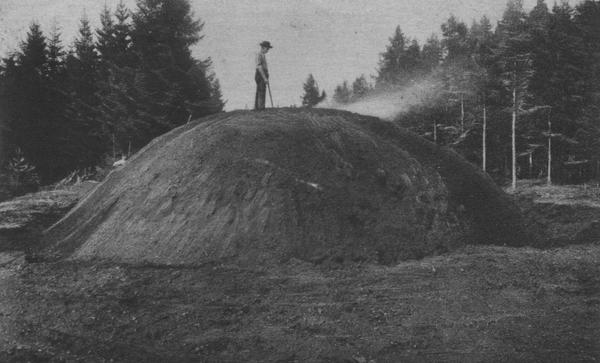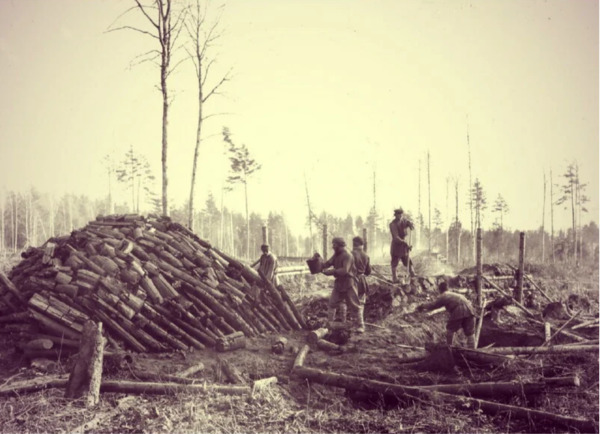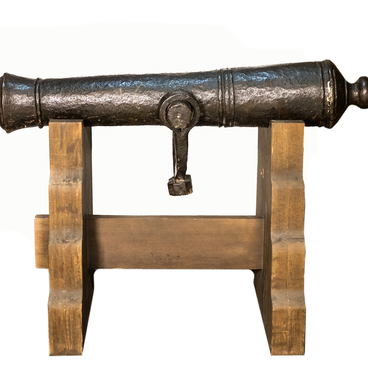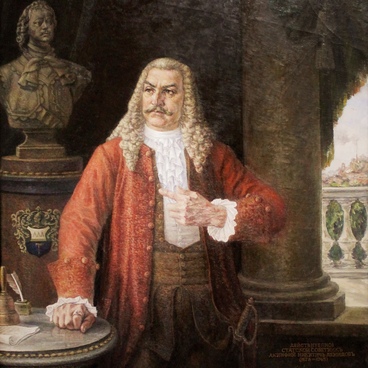The coal stamps in the collection of the Nevyansk Historical and Architectural Museum were made at the Verkhny Tagil plant in 1829. This sign was given to charcoal burners for each box of coal delivered. A box was a wicker cart that could hold up to 20 poods of coal (about 320 kilos). At the end of the month, charcoal burners could bring their seals to the office and exchange them for money. At first, only the name of the plant and the date were written on the metal seal, then they began to indicate the number of boxes for which it was issued.
Сoal stamp
Creation period
1829
Dimensions
2,7x2,7 cm
Diameter: 2.7 cm
Diameter: 2.7 cm
Technique
Minting
Collection
6
Open in app#1
Сoal stamp
#3
#11
Coal production workers were usually peasants assigned to the plant. In spring and autumn, they cut wood, then put the firewood in stacks: large round heaps, up to five meters tall. The pile was covered with turf and earth, leaving a hole in the center: a ‘pipe, ’ into which burning coal was poured. For two or three weeks the firewood in the stack did not burn, but smoldered without access to air, turning into charcoal. One heap of birch firewood produced 50 boxes of coal, while pine firewood yielded 90 boxes.
#4
Coal heap structure for charcoal production. The heaps were called ‘stog’ (stack) or ‘kaban’ (boar).
#7
The work of a charcoal burner required special skills: it was necessary to understand in detail the coal burning process to know exactly where to add earth on top of the heap, and where to reduce it, whether the wood smolders evenly so that neither underburning nor overburning of coal occurs, otherwise the work of several weeks would be lost. It was forbidden to put larch firewood in the coal heap, because they could explode during the burning process and disperse the entire coal heap, and injure the coal burners.
#5
Coal heap for charcoal production
#8
Making charcoal was a very difficult and unhealthy job. Coal burners had to live for a long time in damp and cold dugouts, breathe smoky air. They had no rest; during the working season they often had to work day and night. The acrid smoke and soot rising from the burning firewood under the turf caused coal burners severe pain in the eyes, breathing became irregular, heavy, and for two or three weeks after burning coals they would spit the soot which had deposited in their lungs. The work of charcoal burners was paid by the piece.
#9
Coal burners at work
#12
State Autonomous Cultural Institution of the Sverdlovsk Region "Nevyansk State Historical and Architectural Museum"
read morehide
00:00
00:00
1x
Сoal stamp
Creation period
1829
Dimensions
2,7x2,7 cm
Diameter: 2.7 cm
Diameter: 2.7 cm
Technique
Minting
Collection
6
Open in app
Share
